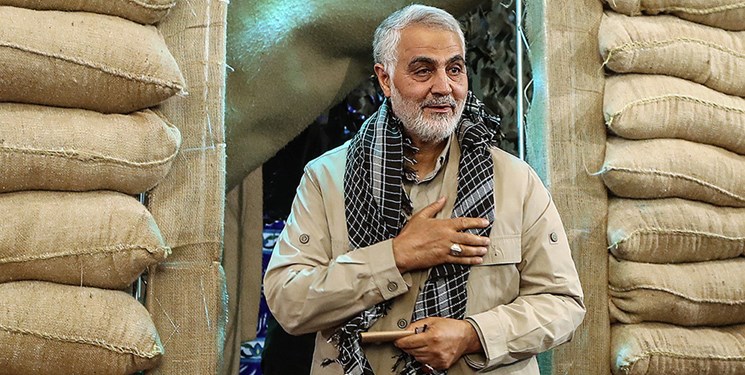Occupiers nightmare; The role of Haj Qasim in the development and strength of the axis of resistance in Western Asia.
Sardar Shahid Ghasem Soleimani, using his military genius and strategic thinking, identified the spontaneous nuclei of the resistance in the region and communicated with them. … succeeded in consolidating and developing this axis.
On January 3, 2020, on the direct orders of then-US President Donald Trump, vehicles carrying Sardar Qassem Soleimani, commander of the Quds Force of the Islamic Revolutionary Guard Corps, and Abu Mahdi al-Mohandes, deputy head of the Iraqi Popular Mobilization Organization, near the airport. Baghdad was targeted by American terrorists, and the two key commanders were martyred along with a number of their comrades.
In the present report, on the pretext of the second anniversary of the martyrdom of these commanders, the role of Haj Qasim in developing and consolidating the axis of resistance in the region and his success in engineering strategic developments in regional and international equations away from ethnicities, sects and parties is examined.
Where did the axis of resistance come from?
The “axis of resistance”, in other words the resistance front, is in fact an unwritten alliance between countries and powers such as Iran, Syria, Iraq and Hezbollah in Lebanon. The goal of the resistance is to fight the Zionist regime and end Western domination in the West Asian region and to defend the Palestinian cause. The term resistance axis was first used in response to the 2001 remarks of then-President George W. Bush and his Vice President John Bolton, who called these countries and parties the axis of evil.
This axis has crystallized over the past three decades without a formal structural agreement or institutional structure, and as a result of rapid and successive developments and events over the past decades, including US-Zionist efforts to monopolize and dominate power in the region, whether through The military and the imposition of unjust peace came to life in favor of Tel Aviv and to the detriment of the Arabs in general and the Palestinians in particular.
“Mohammad Nader Al-Omari”, a Syrian writer, discusses the various stages of the emergence and development of the axis of resistance in a note in Al-Mayadin. Three stages for this axis in recent decades are:
1- The stage of emergence and declaration of existence (1979 to 1990): In this stage, the primary nucleus of the axis of resistance was created, not its main foundation. Because its components did not have the necessary crystallinity. This period began after the signing of the peace and Camp David agreements between the then President of Egypt Anwar Sadat and the Zionist regime and the establishment of diplomatic relations with Tel Aviv and the practical withdrawal of Egypt from the Arab-Israeli conflict. In such circumstances, Syria was left alone as the main player in the conflict with the Arab-Israeli conflict due to the escalation of differences between the Arab countries, the withdrawal of Egypt from the Arab-Israeli conflict and the military superiority of the Zionist regime.
It was during this period that the Islamic Revolution of Iran, led by Imam Khomeini, won in February 1979 with the overthrow of the Shah’s regime, which was the executor of US policies in the region, and the slogan of enmity with the Zionist regime, refusing to surrender to US hegemony , The liberation of Palestine, supported the resistance of the Palestinian people. This showed the convergence between the goals of Syria and the Islamic Republic of Iran.
Three years later, as a result of the conditions of the struggle and military resistance against the Israeli occupation, especially after the regime’s attack on Beirut in June 1982 during the Civil War, inspired by and supported by the Islamic ideology and political ideology of the Supreme Leader of the Islamic Revolution. , Hezbollah of Lebanon was formed. The resistance movement worked secretly against the Zionist occupiers for several years, until in 1985, on the first anniversary of the assassination of Ragheb Harb, known as the Sheikh of the Lebanese Resistance Martyrs, the movement officially announced its ideology and strategy to confront the Zionist regime. After targeting US-French forces in Lebanon in October 1983 and killing 300 soldiers, Lebanon’s Hezbollah gained an early Arab reputation for fighting the occupiers.
These three developments, namely Egypt’s exit from the Arab-Israeli conflict and Syria being left alone in the conflict, the victory of the Islamic Revolution and the emergence of Hezbollah in Lebanon, contributed to the strategic closeness between the three resistance actors and led them to a strategic agreement centered on the wishes of the Palestinian people.









